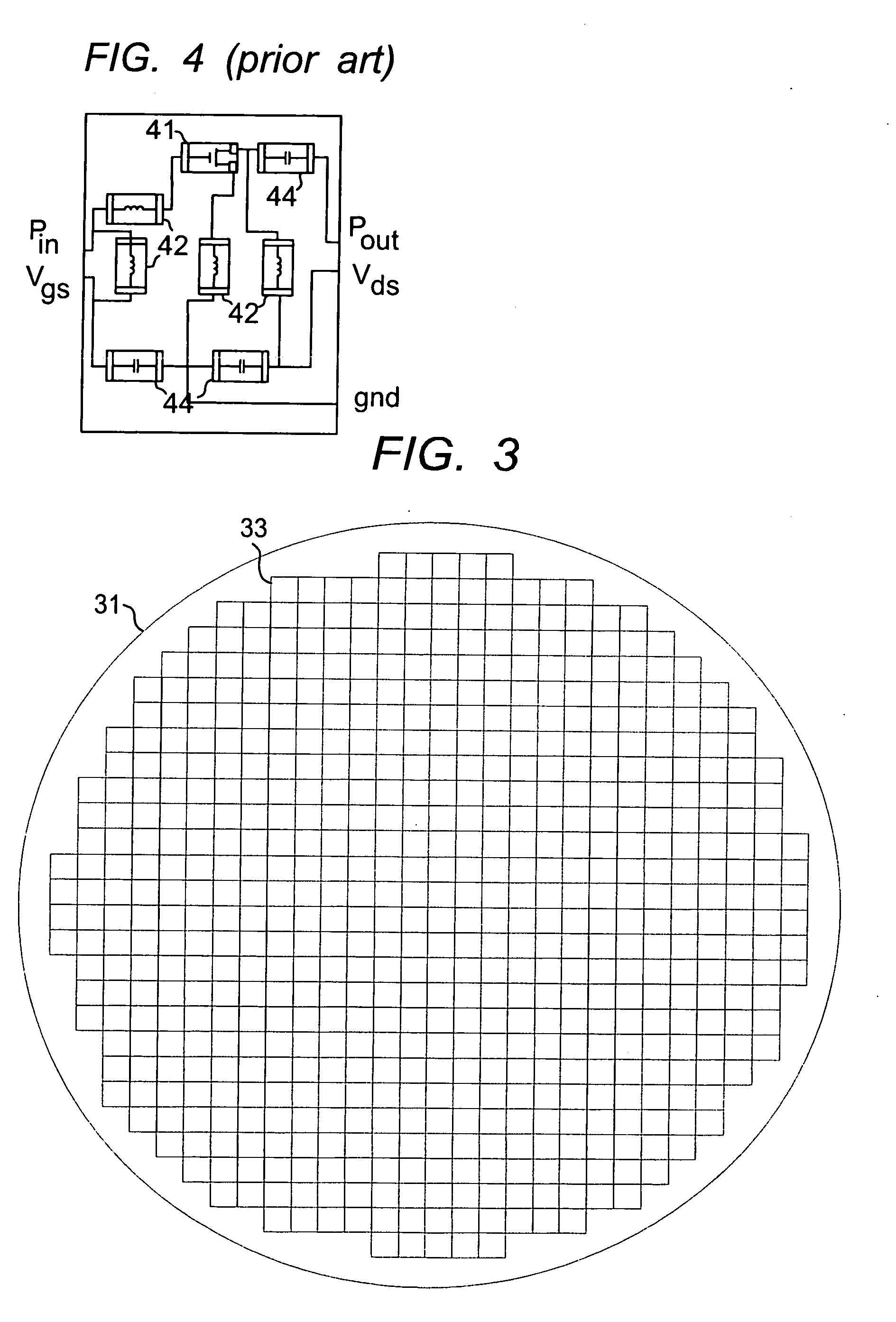Integrated passive device substrates
a passive device and substrate technology, applied in the direction of capacitors, semiconductor/solid-state device details, inductances, etc., can solve the problems of reducing the performance of capacitors, reducing the density of stable charge carrier traps, and reducing the efficiency of capacitors
- Summary
- Abstract
- Description
- Claims
- Application Information
AI Technical Summary
Benefits of technology
Problems solved by technology
Method used
Image
Examples
Embodiment Construction
[0020]FIG. 1 is a view of a silicon wafer 11. The substrate wafer is a single crystal silicon wafer cut from a boule, and has properties described earlier, in particular, intrinsic resistivity. In this description, reference to silicon means single crystal silicon. Silicon wafers are produced in many sizes, but typically the larger the diameter of the wafer, the lower the potential device cost. Currently, silicon wafers are available in diameters up to twelve inches. With twelve inch wafers state of the art, that size will be used as the example in the following description. It should be understood that smaller wafers, for example 6″ or 8″, are also useful. The single crystal wafer has useful attributes for an IPD substrate wafer. It is typically thin (e.g. 200-700 microns), but is robust physically, and can be handled and processed. It is very flat over a large area. It has a highly polished uniformly smooth surface. And it is compatible with silicon wafer fabrication processes and...
PUM
 Login to View More
Login to View More Abstract
Description
Claims
Application Information
 Login to View More
Login to View More - R&D
- Intellectual Property
- Life Sciences
- Materials
- Tech Scout
- Unparalleled Data Quality
- Higher Quality Content
- 60% Fewer Hallucinations
Browse by: Latest US Patents, China's latest patents, Technical Efficacy Thesaurus, Application Domain, Technology Topic, Popular Technical Reports.
© 2025 PatSnap. All rights reserved.Legal|Privacy policy|Modern Slavery Act Transparency Statement|Sitemap|About US| Contact US: help@patsnap.com



